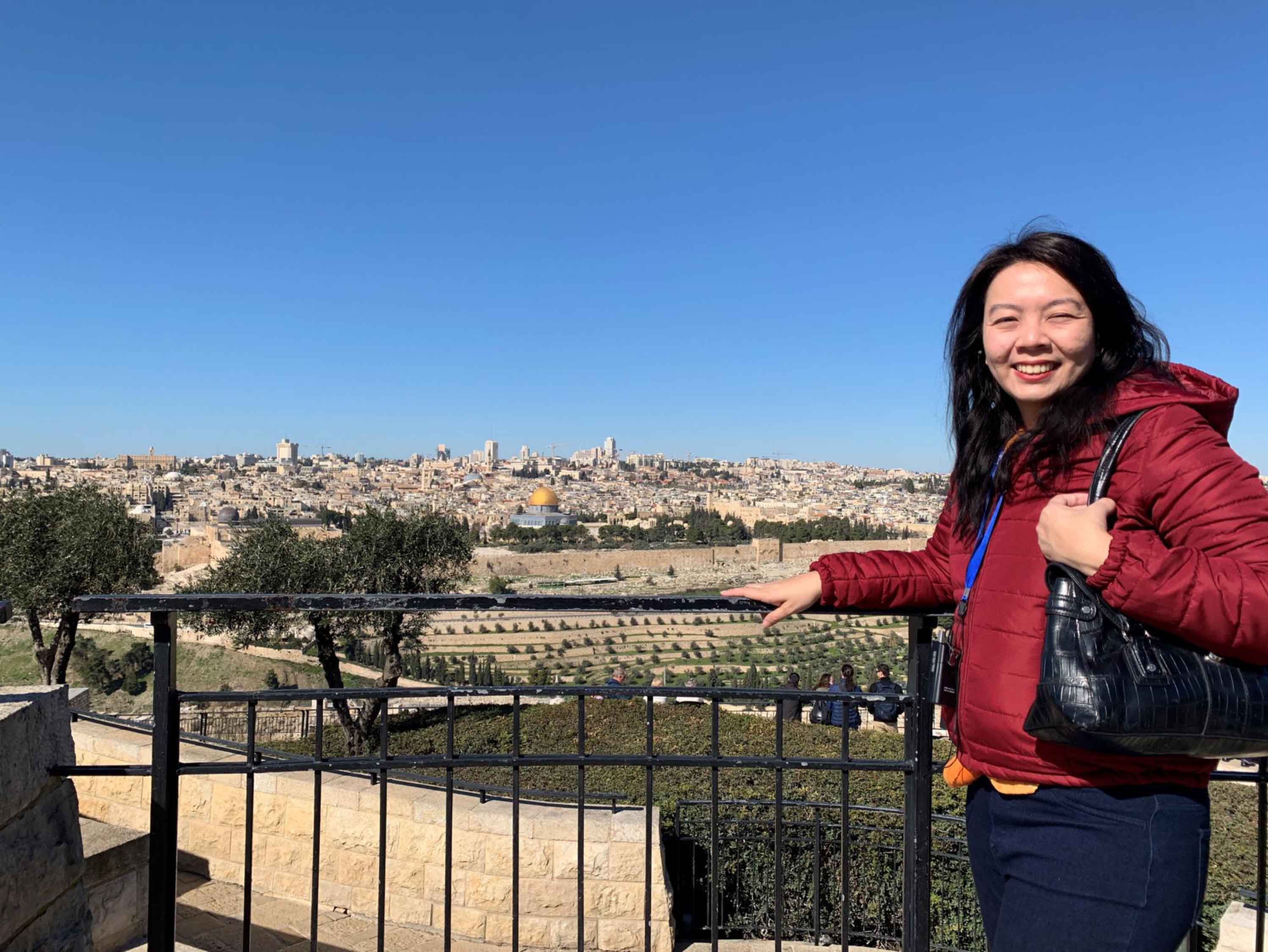
Into the Promised Land: Israel
From Egypt to Jordan, and now to Israel. For the Christian faith, this travel itinerary is the transition from the Old Testament to the New Testament in the Bible – the story of the Jews moving out of Egypt and into the Promised Land, Israel. From Moses to Jesus.
Coming fresh from Mount Nebo in Jordan where the Lord showed Moses the Promised Land, we entered Israel after passing through tight border security and ventured Mount Tabor to visit the Church of the Transfiguration. This Franciscan church is traditionally believed to be the site where the Transfiguration of Christ took place.
We then drove to Yardenit, a spot situated on the banks of the Jordan River at the tip of the Sea of Galilee where Jesus was said to have been baptized by John the Baptist. Each year, this site is visited by over half a million tourists and pilgrims who choose to participate in baptism ceremonies that can be held along its banks. We ended an eventful day by checking into our hotel in Tiberias.
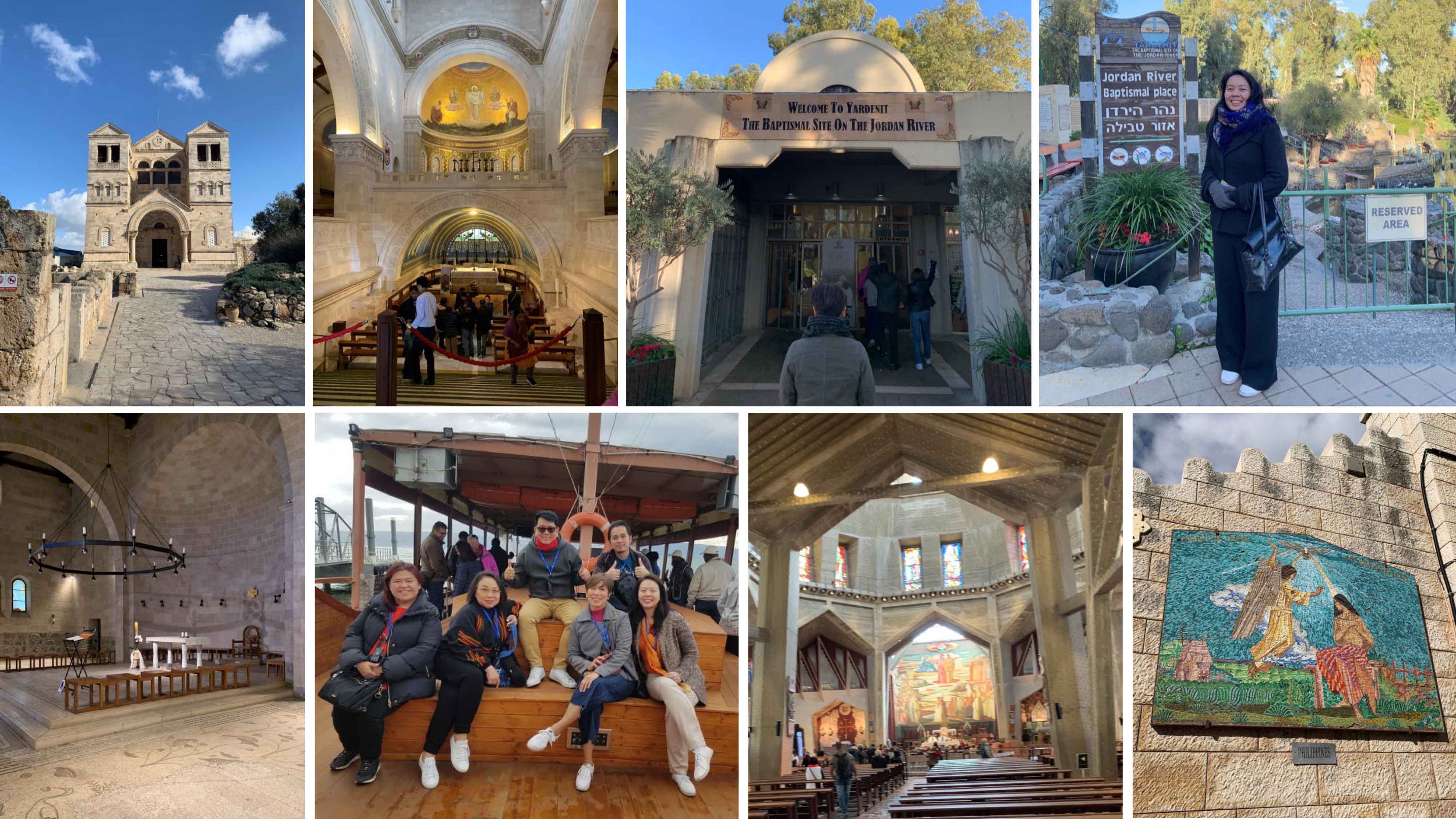
Early the next morning, we visited the Church of the Multiplication in Tabgha. This church marks the site where Jesus performed the miracle of the multiplication of loaves and fish. It is also the site where Jesus appeared for the fourth time after his resurrection. The church highlights a floor mosaic showing two fish on either side of a basket of loaves. Beneath the altar of the Church is a large rock where it is thought that Jesus placed the fish and loaves and blessed them.
Our next activity was riding a boat on the Sea of Galilee, where Jesus Himself walked and sailed with his apostles. It was an amazing experience to sail in the very Sea that had been featured in so many Bible stories. After the boat ride, we visited the town of Nazareth where the Church of the Annunciation is located. This is supposed to be the site where the Angel Gabriel told Mary she would be the Mother of Christ. The Church displays artworks depicting Mary which are donated from all over the world. The mosaic dedicated by the Philippines was displayed close to the entrance of the Church. It seems that Mary and Joseph were neighbors because right next to the Church of the Annunciation is the Church of St. Joseph. This Church was said to have been built over the place where Joseph lived.

We then went to Cana where Jesus performed his first miracle of changing water into wine during a wedding feast. A church sits on the site of the wedding and the Church is a favorite spot for visitors to arrange weddings and renewl of vows. Our next stop was Capernaum, where Jesus went to live after he left Nazareth to carry out his mission. Before ending the day, we visited the Mount of Beatitudes, the hill where Jesus is believed to have delivered the Sermon on the Mount. The Church of Beatitudes is surrounded by beautiful gardens with peaceful sitting areas and biblical readings to reflect on.
Our third day began with a trip to Rosh Hanikra, which are white chalk cliffs on the border between Israel and Lebanon. There are tunnels carved into the cliffs and it was used by the military before. Now, it’s a favorite seaside destination for families. We then moved to Acre, a historic walled port city. It had preserved ruins from the Ottoman empire and reminded me of old European cities. It is also a popular summer destination for Israelis. From Acre, we drove to Haifa, to see the Bahai Gardens otherwise known as the Hanging Gardens of Haifa, which I learned was an important site of the Bahai religion. Before heading to Tel Aviv, we stopped at the Stella Maris Monastery or the Monastery of Our Lady of Mount Carmel located on the slopes of Mount Carmel in Haifa.
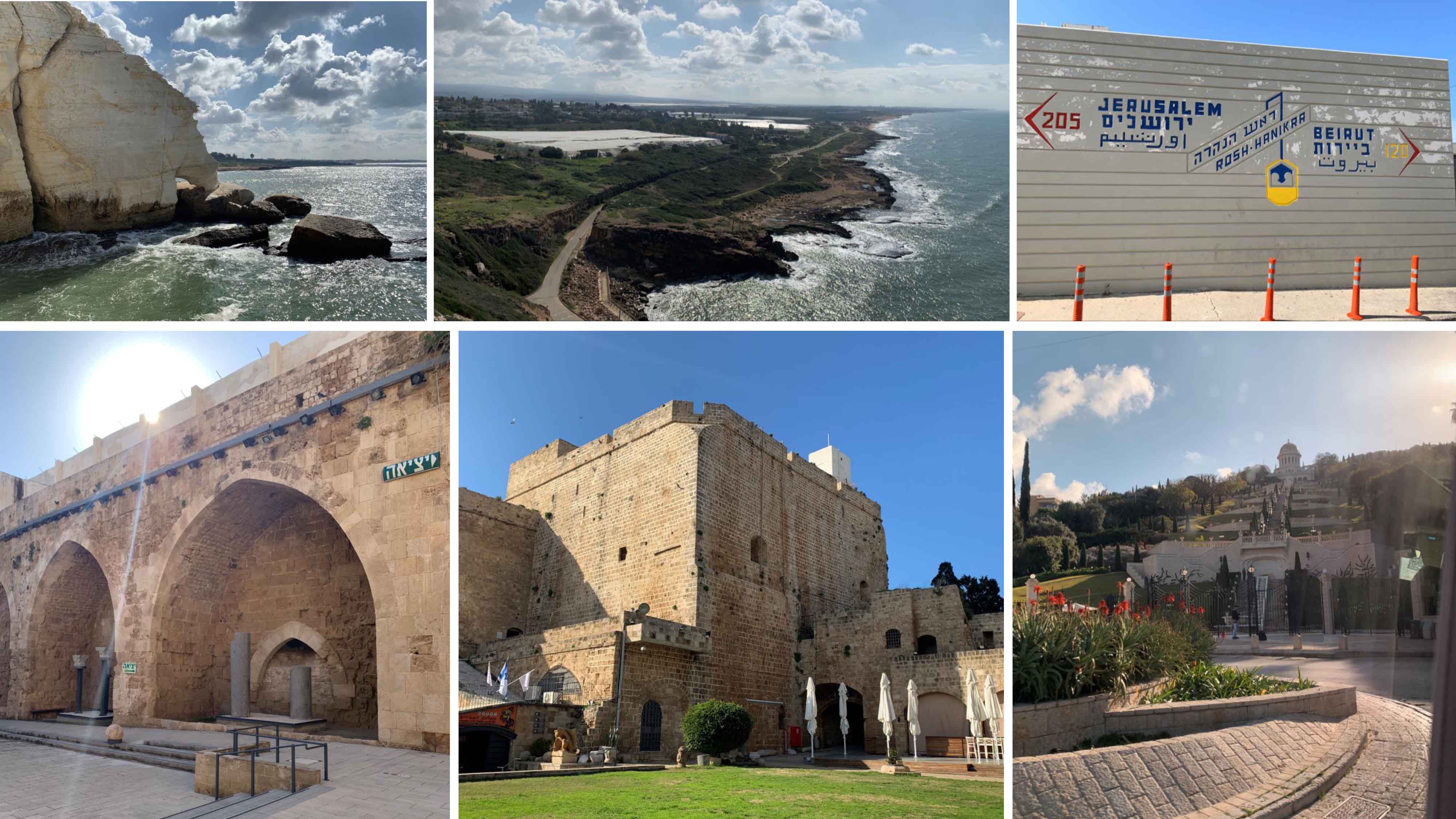
The next morning, we drove around for a tour of Tel Aviv which I didn’t realize was located on the Mediterranean Sea. We got to see its famous Bauhaus buildings and stopped by a market for some quick souvenir shopping. We then drove to Jerusalem to visit Yad Vashem, Israel’s largest Holocaust memorial. The museum provides a wide range of multimedia in its galleries discussing the Holocaust. The place is not fun to visit but recommended to complete your Israel experience. Outside the museum is the Garden of the Righteous where trees are planted to remember different people who helped protect the Jews. On a happy note, it pleased me to find the tree dedicated to Oscar Schindler.
The next day, we visited Bethlehem, which I didn’t know was part of the Palestinian occupied territory in Israel. The biblical birthplace of Jesus, it is a major Christian pilgrimage destination. Our first stop was the Church of the Nativity where Jesus was born. We had to stoop low to enter the church as the only doorway is just about 1.2 meters high. I felt blessed to have the chance to touch the silver star that marks the place of Jesus’s birth. Next, we visited Shepherd’s Field, identified as the scene where the Angel of the Lord visited the shepherds and informed them of Jesus’s birth.
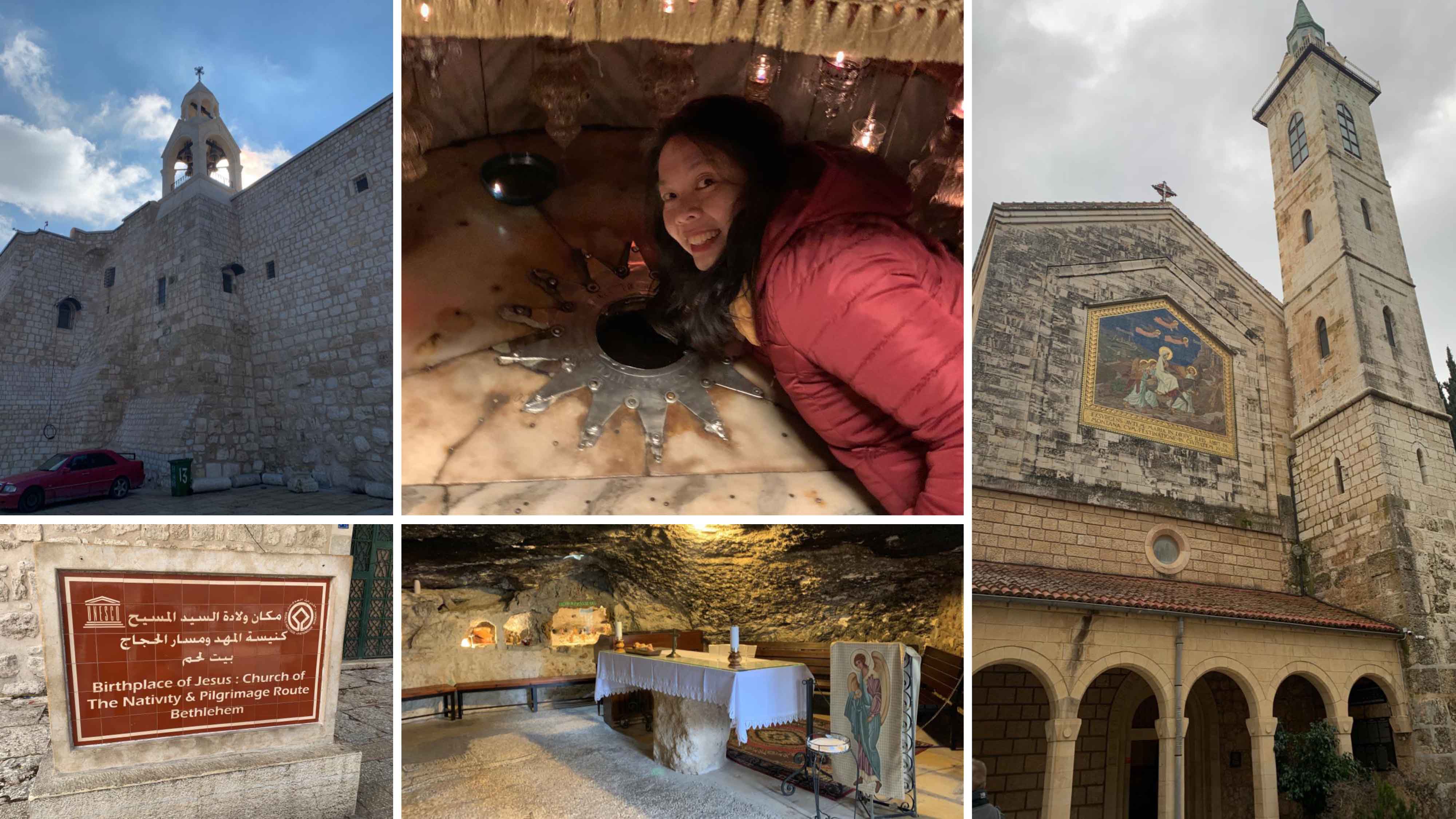
After Bethlehem, we drove back to Jerusalem to visit Ein Karem, birthplace of John the Baptist, and the Church of the Visitation, said to be built over the home of John the Baptist’s parents and where the Virgin Mary went to see her cousin Elizabeth. It was quite a way to end the day climbing up the Church that stands high up on a hillside where there is a wonderful view of the valley and the surrounding wooded hills.
The next day, we visited the Old City of Jerusalem, a walled area within the modern city of Jerusalem. It is home to the Western Wall, also known as Wailing Wall – the last remaining wall of what was once the Jewish Temple and is today the holiest site in the world for the Jews. It is believed that the wall is closest to the gates of heaven and considered to be the House of Prayer for all nations, hence pilgrims come here to offer their prayers in the small crevices on the wall. After leaving our prayer intentions, we did the Via Dolorosa or Stations of the Cross which re-enact the path Jesus took before his Crucifixion. We also stopped by the Church of the Holy Sepulchre, where Jesus was crucified and location of Jesus’ empty tomb.

After a prayerful morning, we drove to the Dead Sea, the lowest point on Earth, where we got to experience floating on its therapeutic waters and made a stop at the Qumran where the Dead Sea Scrolls were discovered. We ended the day’s tour with a visit to Jericho, the oldest city in the world where we viewed from afar Mount Temptation, where the Devil tempted Jesus for 40 days.
After a restful night, we started our day visiting other popular spots around Jerusalem. We drove to the Mountain of Olives, and walked along the Palm Sunday Road, passing by the Church of Dominus Flevit where the Lord wept and shed tears for Jerusalem. At the end of Palm Sunday Road is the Garden of Gethsemane, where Jesus where the Agony in Garden occurred. Beside the garden is the Church of All Nations, built to commemorate Jesus during his agony in the garden. Inside the church, you will notice that the walls are dark, but the windows are bright. Its supposed to give you the feeling of night and the echoes the experience of Jesus on the night he was betrayed. We concluded the day with a visit to the Israel Museum which houses a replica of Jerusalem in 66 BC.
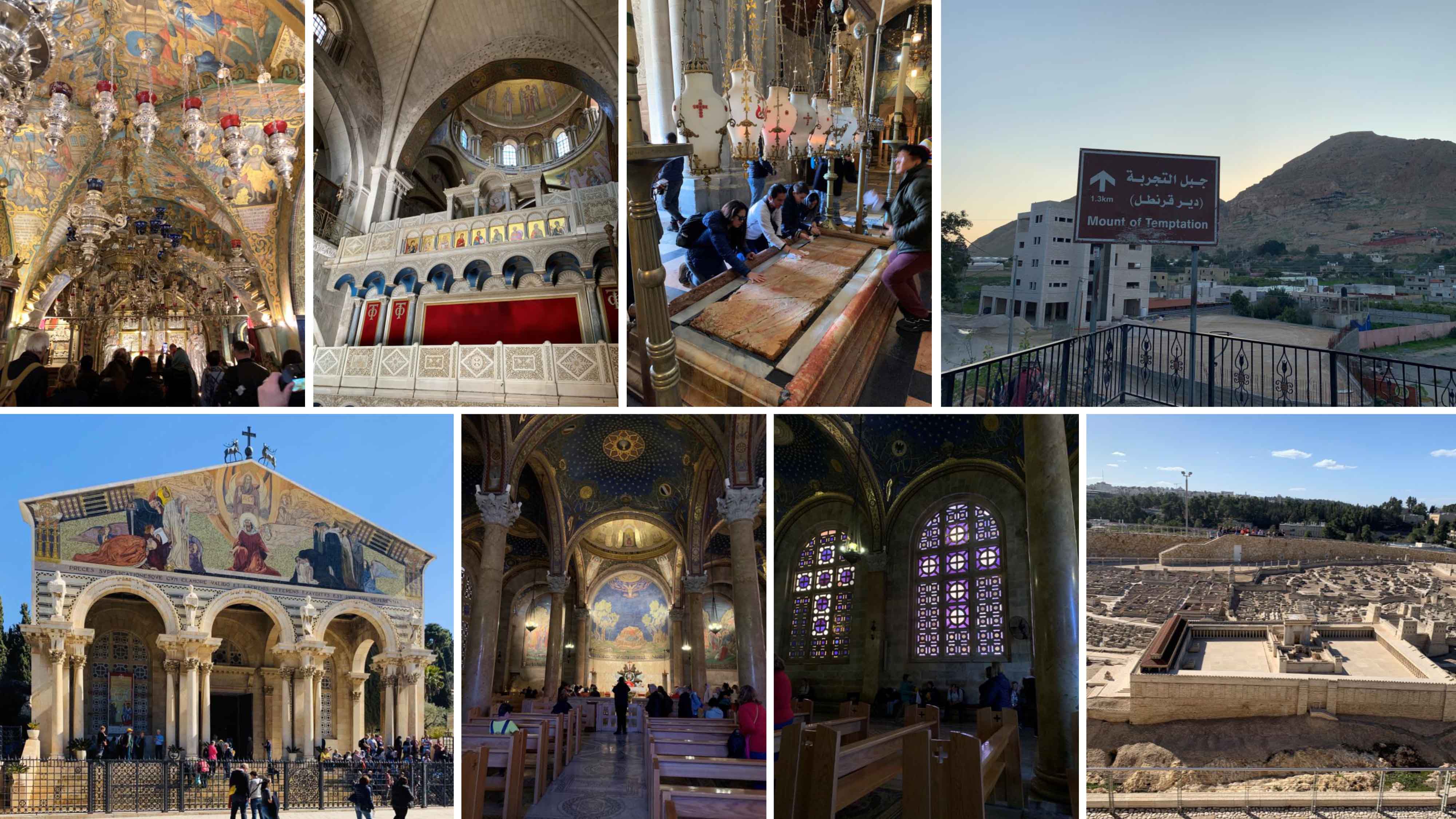
On our last tour day and before heading to the airport, we visited Jaffa which is said to be the world’s oldest seaport. It is believed that it was from here that Jonah departed on his famous voyage where he was swallowed by a whale. It was also here that Peter left Israel to spread the World of God to the West. Reflecting on my trip to Israel, I couldn’t help but feel that my faith was deepened, even if our tour did not take the traditional pilgrimage itinerary. Walking the very same streets that Jesus walked, and stopping at the places he would have been, gave me a feeling of being more deeply connected to Jesus and I will be forever grateful for the experience.

Recent Comments